
Brand building has often been seen as a numbers game focused on maximizing awareness. More brand touchpoints lead to greater visibility and more closed deals. However, this misconception usually leads to quantity-focused brand strategies, which can be at the expense of substance and meaningful customer relationships. And with today’s modern consumers who value authenticity and relevance from the brands they interact with, it can actually alienate them.
Strategizing brand touchpoints, therefore, isn’t about ubiquity; it’s about building a holistic experience for your audience by focusing on interactions that truly matter. Your first step? Understanding what brand touchpoints really are and the roles they play in creating a stronger brand that can withstand competition.
Read on as we break down the fundamentals of brand touchpoints in this beginner-friendly guide.
Defining Brand Touchpoint
A brand touchpoint is any moment of interaction between a brand and a person. It’s made up of small moments, like a friend’s casual suggestion or a branded post spotted while scrolling social media. And each one shapes how people see your brand and builds lasting value.
Why Brand Touchpoints Matter?
Brand touchpoints matter because they influence brand perception and buying behaviors. Whether someone reads a sponsored article or visits your website, each interaction can spark curiosity and connect your products with your audience. As time passes, these moments turn prospects into customers and, eventually, into loyal fans.

Some key benefits of having the right brand touchpoints include:
- Increase brand recognition through memorable experiences.
- Build brand trust.
- Provide a chance to inform your audience about what you can offer.
- Create a positive perception by connecting emotions to your brand.
Let’s look at where these touchpoints appear.
Common Brand Touchpoints
The 7-touchpoint rule in marketing suggests that it only takes at least seven interactions with a brand before a potential customer decides to purchase. However, the quality and the right mix of touchpoints are more crucial in achieving desired outcomes and increasing brand success.
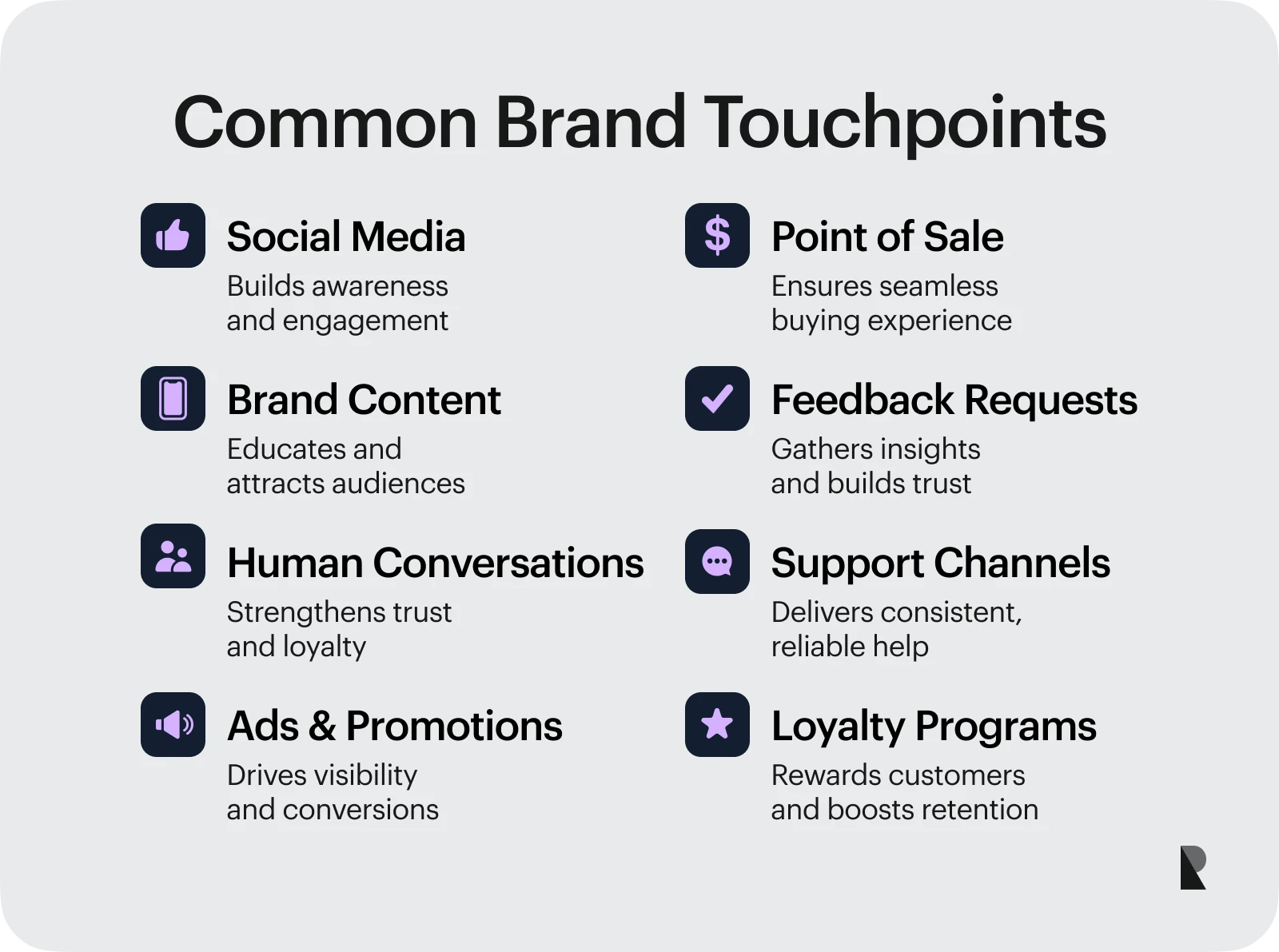
Here are the major brand touchpoint examples you must consider.
1. Social media
With over five billion users worldwide, social media is a prime spot for brand touchpoints. Brands can easily reach anyone, and users can communicate directly with them.
For global brands or those expanding, social media analytics and tools help personalize content and reach the right audience. More people now use social platforms as search engines, searching Facebook for products instead of Google.
In short, social media touchpoints are ideal for building awareness, trust, and customer loyalty.

2. Company content: blogs, podcasts, and videos
Blogs, podcasts, and videos are influential brand touchpoints that enable brands to inform their audience about products and services and engage with them. With SEO strategies in place, these pieces of content become more easily discovered, resulting in better lead generation.
Podcast listenership is on the rise, with 584 million listeners globally seeking more in-depth insights. These are the types of customers with high potential. Videos—such as reels, vlogs, and webinars—deliver your brand message quickly and memorably, especially as demand grows on platforms like TikTok.
3. Conversations with company representatives
Human-to-human interactions directly shape how customers see brands, making conversations powerful brand touchpoints.
When people feel that brands hear them by promptly acknowledging their concerns and tailoring solutions to their needs, these conversations make customers feel confident that they have chosen the right brand. They foster trust and, eventually, loyalty.
Talking to real representatives also uncovers insights that automation often misses. A little caveat, though. While most people stick with brands that offer excellent service, a single negative experience can deter them. Consistency is crucial.

4. Advertising and promotions
Paid, highly targeted brand touchpoints, such as advertising and promotions, can amplify your reach tenfold when executed effectively. Customizing ads with messages that resonate with the target audience can significantly influence how they perceive your brand, encouraging them to make a purchase.
For example, launching targeted ads on social media, OOH, and podcasts is great in shaping how customers think about you. Pair that with promotions, and you can move them closer to purchasing by offering hard-to-say-no-to discounts, sales, or other special offers.
Ensure you invest in high-ROI ads and promotions by hiring a professional brand strategy company.
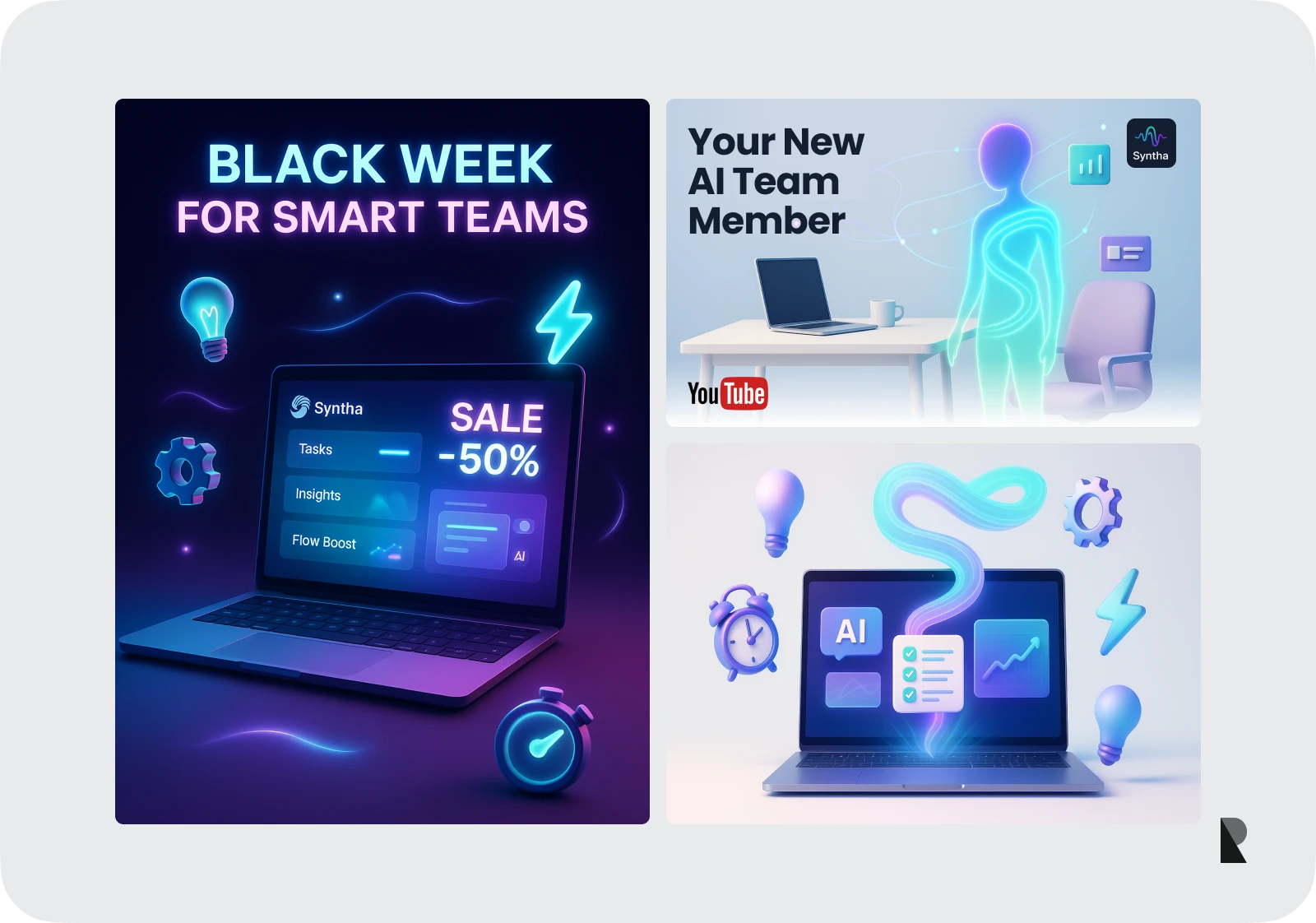
5. Point of sale (online and offline)
Point of Sale refers to the brand touchpoints where potential customers become buying customers. It’s when they are about to hit ‘Confirm Purchase’ on their online carts or pay at the cashier in a grocery store, for instance.
This is your moment to finish strong. Consistency from first contact to checkout matters. A glitchy checkout, wrong pricing, or rude staff can drive customers away and leave a lasting bad impression.
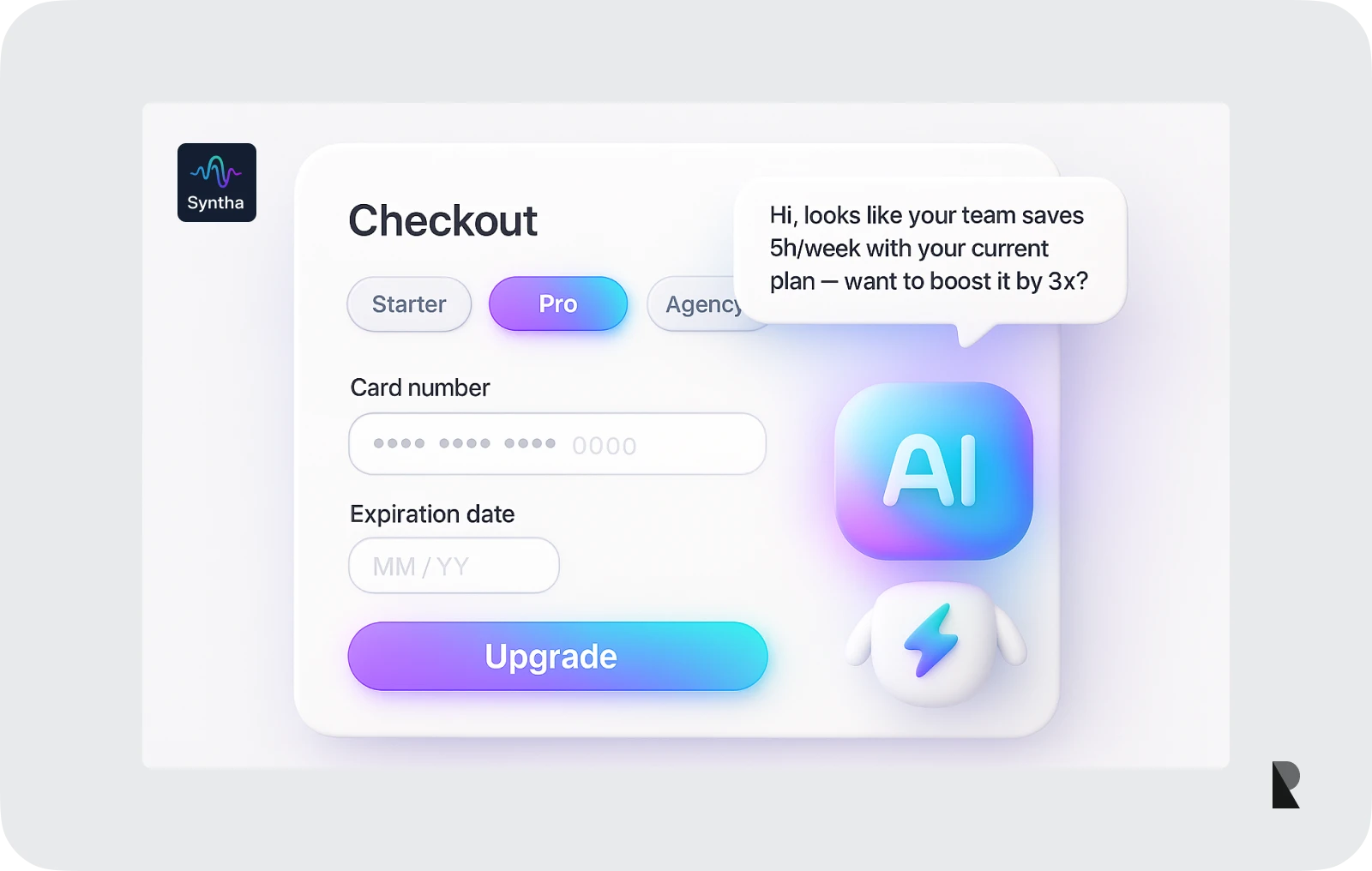
6. Post-purchase feedback requests
Requesting reviews or gathering feedback after a purchase helps brands understand customer sentiment and experience.
Customers are often more honest and open after investing in your brand, making this a valuable touchpoint for building trust. You can do this by sending follow-up emails or by using in-app feedback pages to make sharing opinions easy and convenient.
Asking for feedback demonstrates your value to customers, fosters trust, and enhances retention. It also helps identify and resolve issues quickly, as well as open up opportunities for upselling.
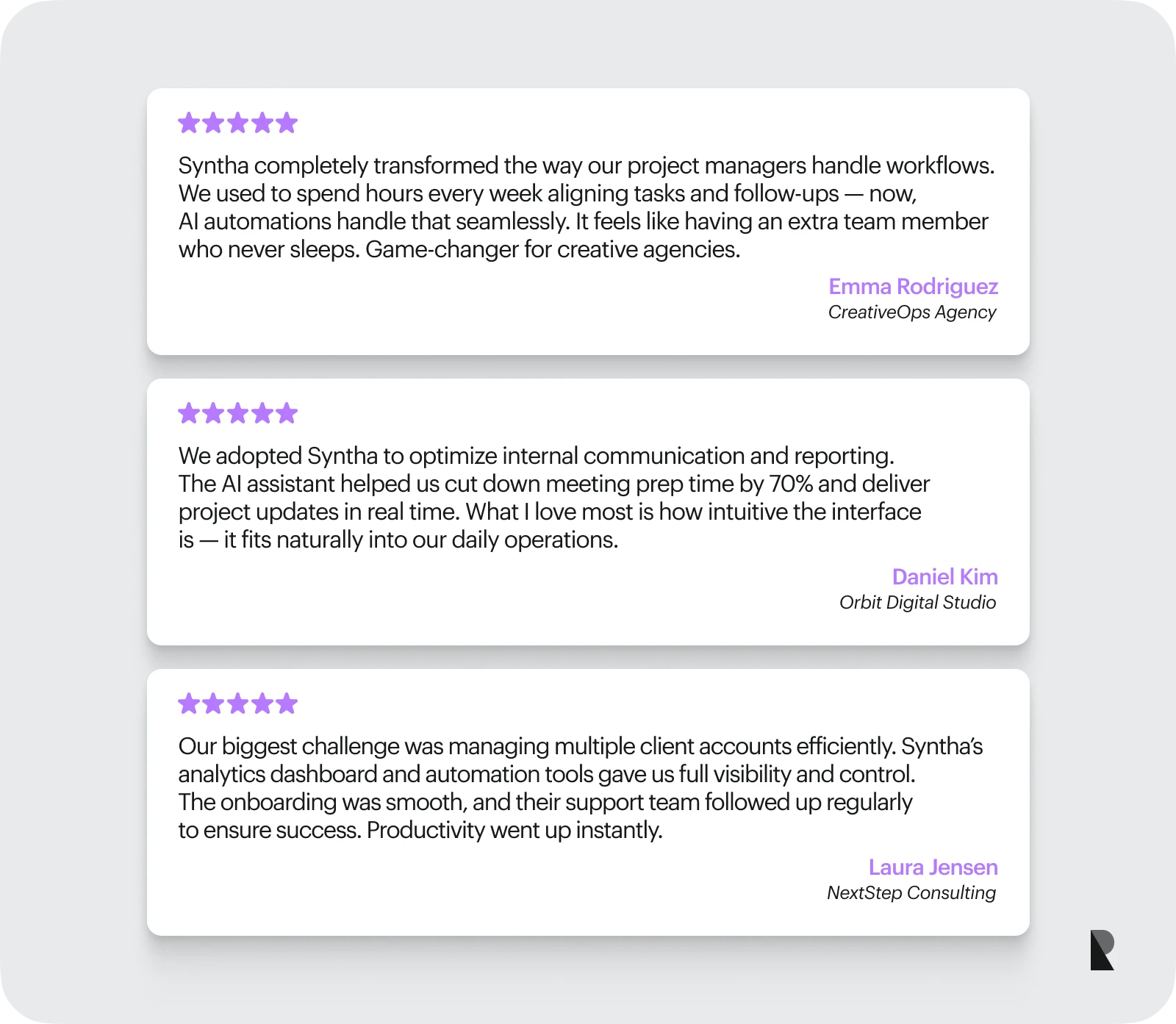
7. Support channels and help desks
Extend customer service to potential and existing customers through support channels and help desks. You can also have a dedicated social media page for customer concerns, like @emiratessupport on X, chatbots or live chats on your website, and respond to comments, DMs, and emails.
Moreover, it is crucial to maintain omnichannel support across devices and platforms so consumers can easily reach out. There should also be a central system that streamlines customer communication history for faster and more personalized responses. These efforts reflect reliability and dedication to providing excellent customer service.
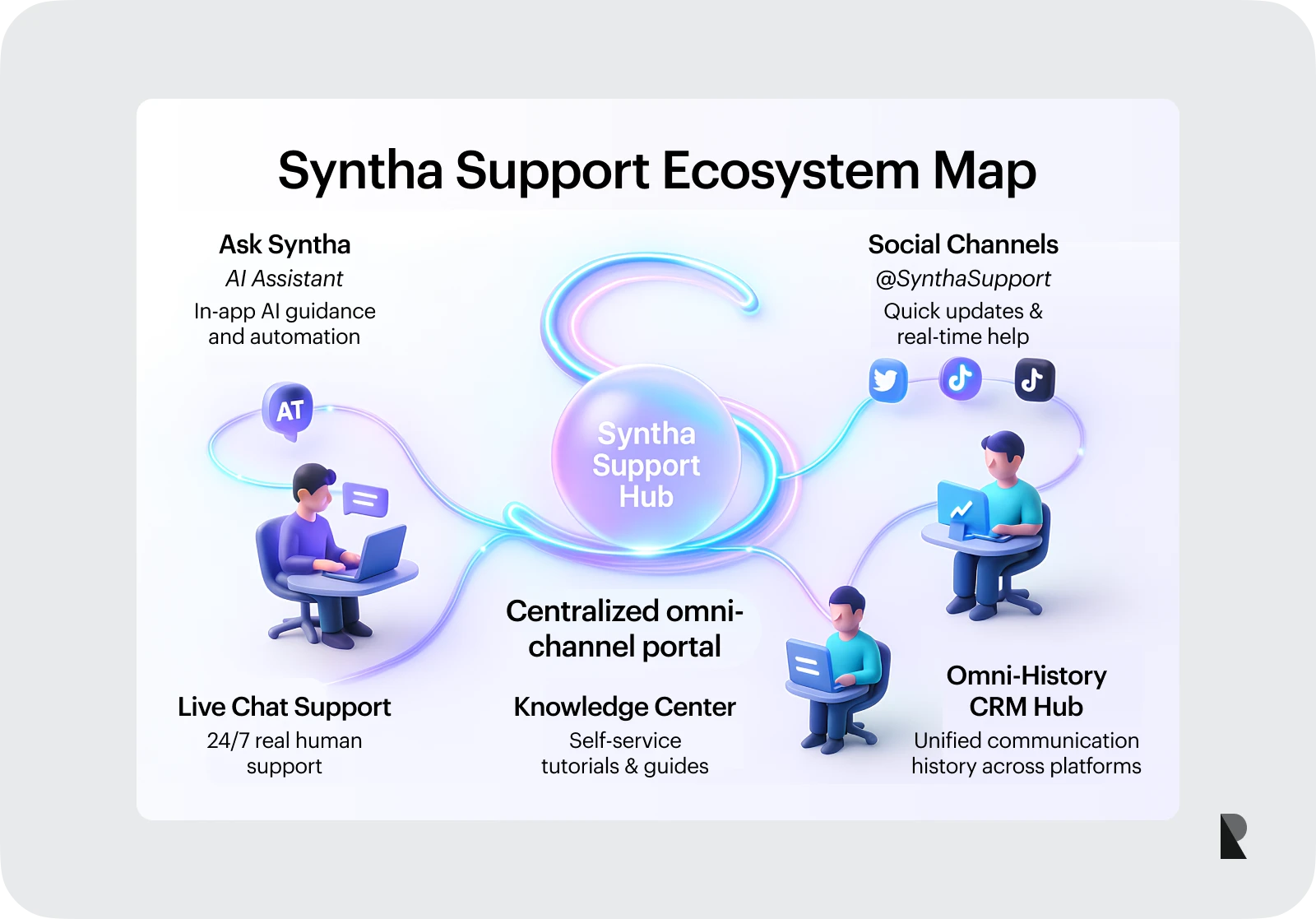
8. Loyalty and rewards program
Rewarding customers for their continued purchases and engagement can be a more effective motivator, encouraging them to return. You can offer referral rewards, loyalty memberships, purchase-point-based currencies, and tier-based programs.
Loyalty programs also pave the way for a better personalized experience. The more you get to know them—purchases, app usage, in-store interactions—the better you understand their behavior, needs, and customer expectations. In effect, you get to optimize sales and customer retention.

Work with experts and hire one of the top brand design agencies to identify and strategize brand touchpoints that are the right fit for your company.
Brand Touchpoints Types
Not all brand touchpoints are the same. They vary according to where the customer is during their journey and fulfill different milestones.

Pre-purchase touchpoints
Pre-purchase touchpoints occur when a customer is first learning about a brand. It can be the first exposure to an ad or a word-of-mouth recommendation.
Pre-purchase touchpoints build your brand with the customers. So they must be clear and succinct. An ad should clearly and concisely explain what the product does. You can also leverage honest reviews to encourage customers to consider making a purchase.
Aside from paid ads, other pre-purchase customer touchpoints are:
- Search engine queries
- Spontaneous in-store visit
- Online review sites
Purchase touchpoints
A purchase touchpoint is an interaction that leads a customer actually to avail themselves of a product or service. This may be a customer finalizing purchases online or asking an in-store staff member for more information about a product.
However, while purchase touchpoints can lead to a strong urge to buy, they are also sensitive to negative experiences, which can deter customers. That said, you must ensure purchase touchpoints make the buying process simple, secure, and efficient to achieve customer satisfaction.
Examples of purchase points are:
- Add to cart button
- In-store purchase
- Checkout page on an e-commerce site
Post-purchase touchpoint
The interactions that occur after customers purchase from you can increase the likelihood that they will make another purchase. Think of the first purchase as the first date. Now you’ll need to continue engaging by providing after-sales support, sending helpful product tutorials, requesting reviews, or offering deals they may be interested in, such as a loyalty membership or seasonal discounts, to secure their long-term loyalty.
The idea is not to let customers chase after you. Instead, you must anticipate their needs to encourage repeat business.
Examples of post-purchase touchpoints include:
- Delivery status
- Customer support channels
- Loyalty program invitation
- Thank you emails
- Invitation to email newsletters or branded social media pages
Experiential and relationship touchpoints
Experiential and relationship touchpoints can occur across all types of touchpoints, but they focus on associating positive emotions and experiences with the brand. These physical and digital touchpoints aim to create emotional interactions, from initial awareness to post-purchase support.
Positive experiential touchpoints, such as having a helpful support system, lead to deeper connections and trust, which are crucial in converting casual customers into loyal advocates. Most people base their decision-making process on emotions, making it a powerful driver you can tap into to increase retention and customer lifetime value.
Understanding the Different Brand Touchpoints in the Customer Journey
Understanding the different stages of brand touchpoints can help with effective customer journey mapping.
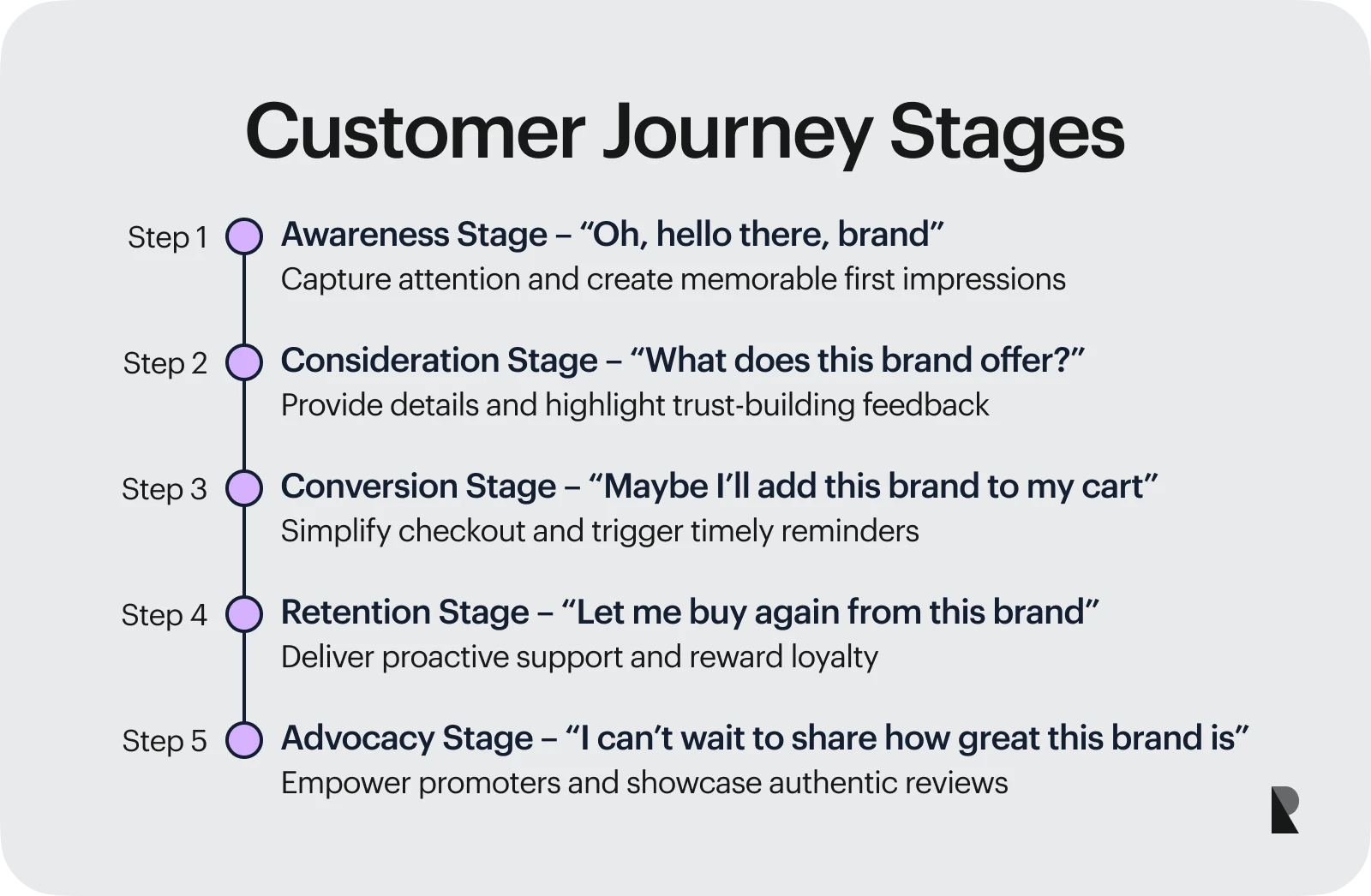
The awareness stage: oh, hello there, brand
Think of the awareness stage as the initial interaction—a handshake or a simple hello—between a brand and a customer. At this stage, people may know your brand from an ad, a shared social media post, a friend's suggestion, landing pages, or simply from browsing the grocery aisle. The goal is to capture potential customers' attention and introduce how the brand can benefit their lives.
While you can aim to reach a broader audience, consider going niche by tapping micro-influencers for higher engagement. You can also experiment with interactive strategies, like VR-powered experiential kiosks, 3D billboards, quizzes, and pop-up events, to increase the time potential customers spend engaging with your brand. You want to capture interest while also creating a memorable customer experience from the outset.
The consideration stage: what does this brand offer?
The consideration stage is when customers compare and evaluate opinions about a product or service, its quality, price, and features. This is when having FAQs readily available on your website or app becomes handy. Ensure that interested customers can easily reach out to customer support if they need further information or assistance before making a purchase.
It also helps to highlight customer feedback or reviews. This could be done through a dedicated feedback page, testimonial videos, or other channels.
The conversion stage: maybe i’ll add this brand to my cart
Conversion occurs when you successfully turn a potential buyer into an actual customer. Key brand touchpoints are checkout pages, payment gateways, and confirmation emails.
Simplify the checkout process and offer multiple payment options for a seamless transaction experience. Should customers hesitate or drop out in the journey, automate abandonment emails to be sent within a few hours to remind them. You can also use exit-intent popups, such as offering limited-time discounts, if they purchase within an hour.
The retention stage: let me buy again from this brand
At this stage, you’ll have to pull all the stops when placing post-purchase touchpoints. You can further customer engagement after their first purchase by implementing proactive support, where your brand reaches out to check on their buying experience before issues arise. Another idea is to gamify loyalty programs to encourage repeat purchases.
The advocacy stage: i can’t wait to share how great this brand is
Once you have gained customers' trust and loyalty, they can become brand promoters through word-of-mouth referrals, social media sharing, or reviews. Touchpoints at this stage include feedback surveys and referral programs. As a brand, it is crucial to identify these brand advocates and publicly recognize them to motivate them and make them feel acknowledged. You can also leverage user-generated content (UGC) to showcase authentic reviews from real people.
Tips for Planning and Optimizing Brand Touchpoints

Tip #1: segment your leads
Lead segmentation enables you to strategize more effectively by personalizing brand touchpoints to resonate with specific audiences. By sending the right message at the right time, you increase their likelihood of becoming a customer.
Lead segmentation also helps spot opportunities and risks that may be overlooked by identifying which segments are most engaged or at risk of dropping out of their journey. This enables brands to concentrate on touchpoints that convert cold leads into warm leads and address the unmet needs and expectations of vulnerable segments.
Tip #2: audit existing touchpoints
It’s essential to keep track of what works and what doesn’t when implementing brand touchpoints. This ensures the brand stays strong and consistent.
When auditing, identify gaps between what brands want to convey and what customers actually experience. Sometimes, the message may no longer resonate as your customers evolve. By implementing periodic audits, you can make sure your brand stays fresh and relevant.
Tip #3: build a touchpoint plan
A touchpoint plan serves as a guide for what, how, and when to implement interactions, ensuring everything feels seamless and making customers want to buy and stay loyal.
When creating a touchpoint plan, visualize the customer journey and set goals for each touchpoint. Don’t forget to track how each touchpoint is performing so you can refine and make adjustments as needed, while maintaining alignment with the overall brand goal.
Create Customer Journeys that Matter
Every brand touchpoint can significantly make or break your brand. And every customer journey is non-linear. So careful planning and strategizing are imperative to ensure brand success.
Thankfully, advanced tech such as AI and CRM tools is available to optimize and create meaningful interactions between brands and their audiences. These tools make it easier to identify patterns, track consumer behavior, discover risks, and consistently deliver genuine value at every stage of the customer journey.
Nov 3, 2025
